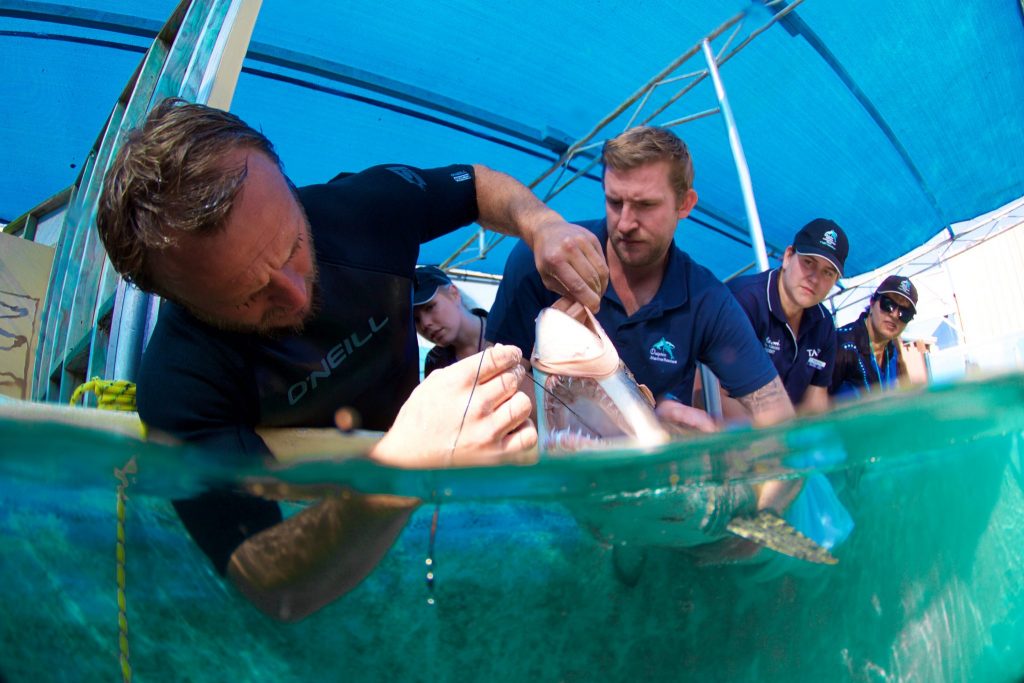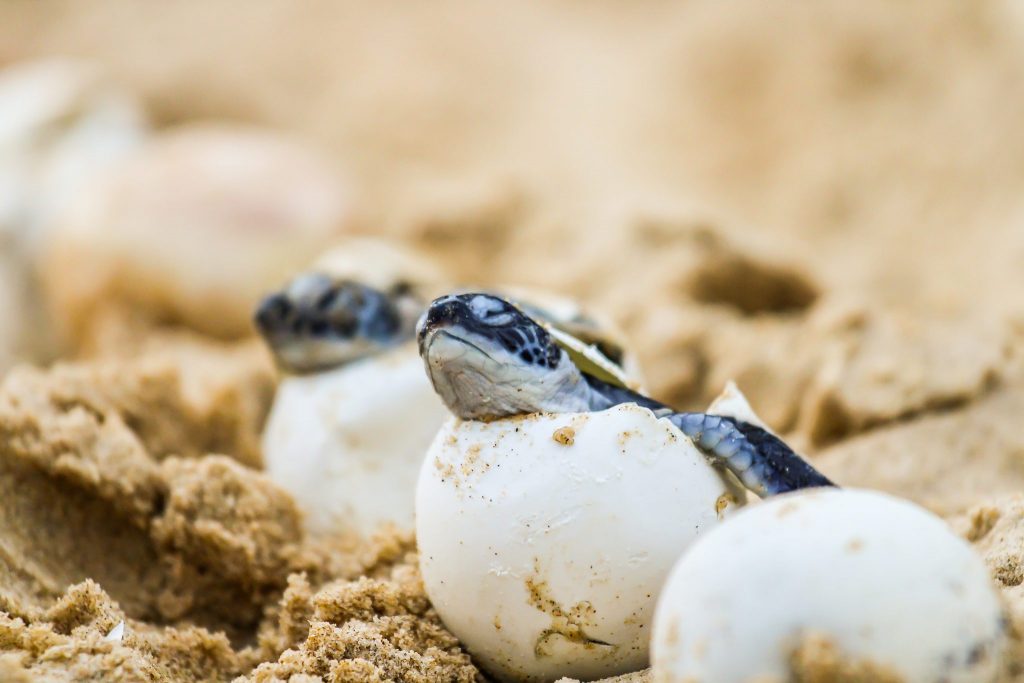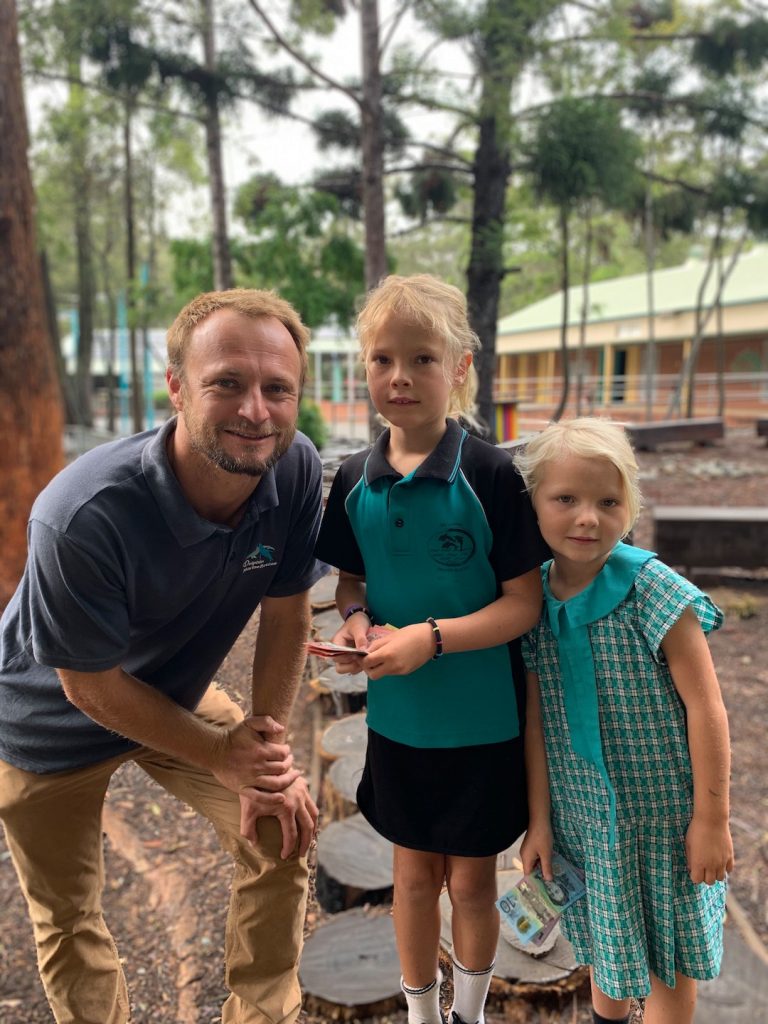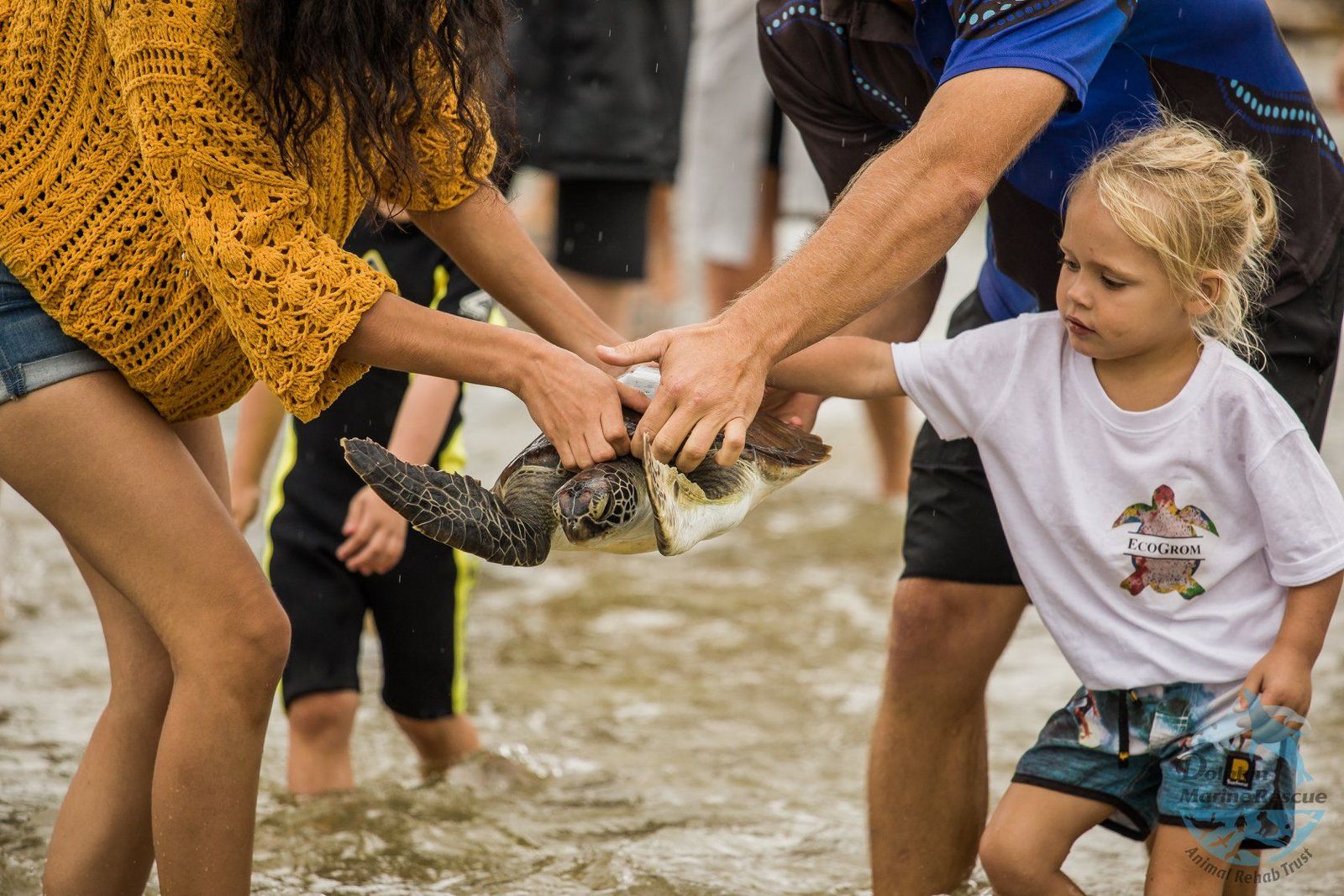Rescuing Marine Creatures Great and Small
For decades, the Dolphin Marine Conservation Park (formerly Dolphin Marine Magic) in Coffs Harbour has been bringing tremendous joy, countless smiles and wet kisses a-plenty to people from all over the world through their interactive and informative sessions with dolphins, seals and other animals. The Park’s primary goal is to inspire people to act in the best interests of marine conservation.
What is perhaps lesser-known about Dolphin Marine Conservation Park (DMCP) is that it is home to a vital rescue and rehabilitation service. We caught up with veterinarian Dr Duan March to find out more…
We last chatted to Duan about the amazing collaborative effort he was involved in releasing turtle hatchlings on Boambee Beach so it was great to touch base again and discover that turtle nests on the North Coast are on the rise and learn of other exciting developments.
Rescue and Rehabilitation
For many of us, the past several weeks have been particularly quiet but Duan has been as busy as ever caring for the scaly, furry and feathered family of the DMCP and responding to urgent phone calls about distressed and injured marine life.
Duan’s expertise means that he’s often called to assist marine animals between Port Macquarie and Ballina. He’s also sought out to help far beyond the local region (including interstate) with the rescue of whales, dolphins, dugongs, seals, turtle, seabirds, and other creatures.
Add to that being a father of three with a PhD deadline looming (his thesis is on green turtles) and it’s easy to appreciate that Duan has a lot on his plate. Luckily, he loves what he does, now more than ever.

Since July last year, DMCP has rescued 102 animals including a grey nurse shark and 70 turtles. There are currently 12 animals in care with one due for release soon.
Over the past 10 or 15 years, the majority of Duan’s rescue work has involved sea turtles so it’s not surprising that they’ve become his favourite animal. “Little turtles are especially cute, and I love how cruisy sea turtles are. They’re super cool critters.”
Fortunately for Duan, the past few months have given him plenty of opportunities to get up close and personal with them.
Turtle nests on the NSW North Coast
The number of turtle nests being established on NSW beaches is on the rise and earlier this year nesting sites were discovered right across Coastbeat country from Port Macquarie to Moonee Beach and up to Diggers Camp in the Clarence Valley. Another chamber was dug on Woolgoolga Beach, but no eggs were laid there.
Why are nesting sites increasing? According to Duan, there’s not a lot of data on nesting frequency or location in NSW. Fortunately, this knowledge deficit was recognised and as a result, DPIE has introduced Turtle Watch.
Knowing these locations, I am curious as to whether turtles seek out the less inhabited beachside spots but Duan tells me that they’re guided by the light or rather lack thereof – preferring dark beaches with little ambient light. With that said though, Duan points out that one green turtle opted for the bright lights and bustling surrounds of Manly Beach earlier this year!
Darker beaches appeal to mothers-to-be because hatchlings look to the moon to guide them out to sea and any ambient light can disorientate them. Sadly, hatchlings may end up going around in circles, unsure of the direction of the ocean.

The North Coast nests were laid in January this year and were discovered the morning after the eggs were laid. The green turtle nesting sites at Moonee Beach and Diggers Camp had high success rates. “This is a great result as nests in NSW are critical to the longevity of the species. Temperatures actually determine the sex of sea turtles and with NSW being cooler than QLD, our nests will all produce males,” Duan says.
Education and Awareness at DMCP
For now, Dolphin Marine Conservation Park is closed to visitors due to COVID-19.
As Operations Manager of Dolphin Marine Rescue, the charitable arm of the Dolphin Marine Conservation Park, Duan hopes it isn’t long before he can share his passion for wildlife and conservation with others once again.
About six months prior to the March closure, DMCP opened a section of the rehabilitation area to the public which proved a great success. “It was terrific. We were able to create such great dialogue with the general public and it was wonderful to see people so engaged.”
“Perhaps it’s not a commonly associated thing – the interactive side guests enjoy, and the rescue and rehab work we conduct, so bringing these components together is important. When we reopen, we will continue to involve guests in the rehabilitation area.”
Float syndrome in Turtles
Many turtles come into Duan’s care because of ‘float syndrome’. This is when gas builds up inside their coelomic cavity-causing them to float on the surface. As a result, they are unable to dive and forage for food and quickly become emaciated. Sea turtles will then need three to four months of TLC before they can be re-released into the ocean.

How do you know if a turtle on the surface has float syndrome? I ask. Duan’s rule of thumb is that if you can catch a turtle then it’s probably sick as the healthy ones are fast!
Fortunately, DMCP recently received a $20,000 grant from the Federal Government, part of the Morrison-McCormack Government’s Communities Environment Program, to continue their great work with sea turtles.
Finding his niche
Duan has certainly packed a lot in since graduating as a vet 15 years ago. He’s even got a Master’s Degree in Whale Acoustics which we’d love to pick his brain about some time for another Coastbeat article. But these days, he’s more than happy for all the time turtles are taking up – both at work and with his PhD.
“It’s fascinating looking into ecosystem health and pollution and tie it all back to the clinical side of things. Turtles are like the canaries in the coal mines – when we see disease in them from urbanised waterways, we know there’s a problem regarding pollution.”
And of course, the fieldwork involved like catching turtles from boats off the NSW North Coast and seeing hundreds of little hatchlings make their way to the ocean at renowned nesting sites such as Mon Repos and Raine Island sure beat sitting in front of the computer all day!
How you can help
Support the well-being of Australian wildlife through rehabilitation, conservation, education and research by making a tax-deductible donation here.

Want to find out about rare freshwater turtles in the Bellinger River or learn more from Duan about fur seals?


